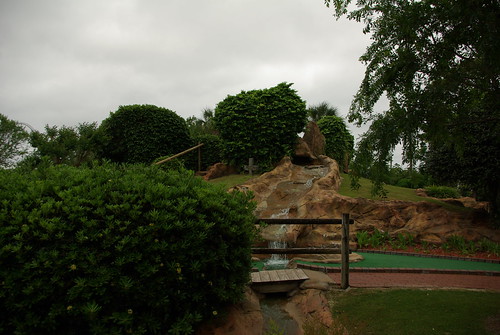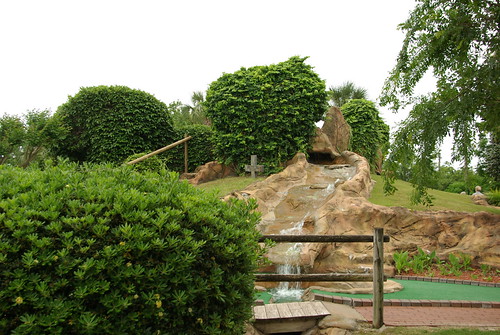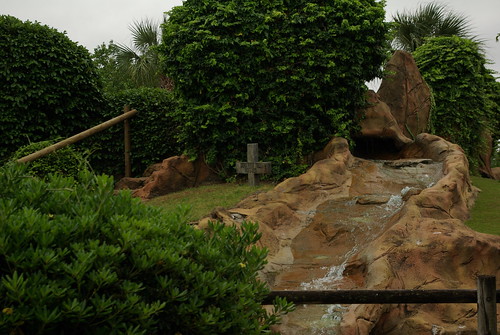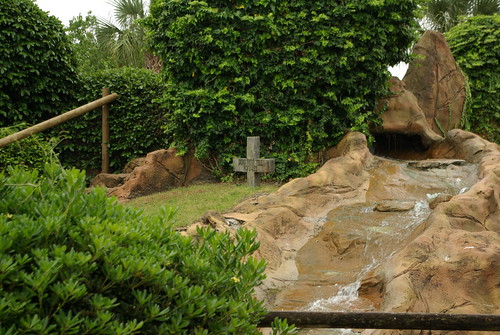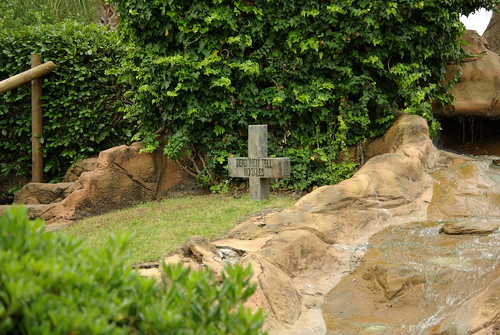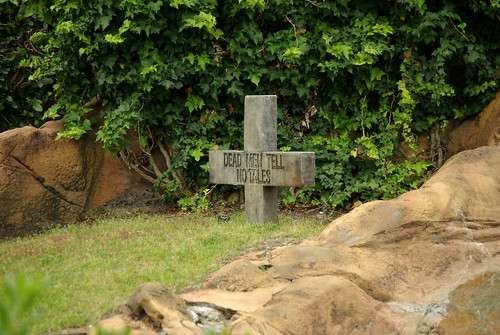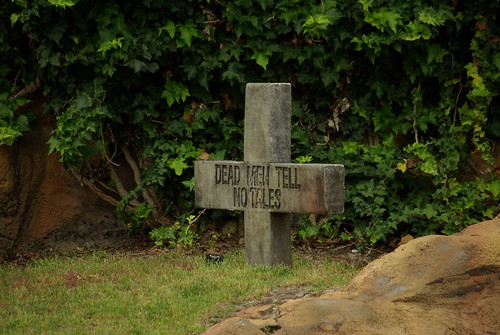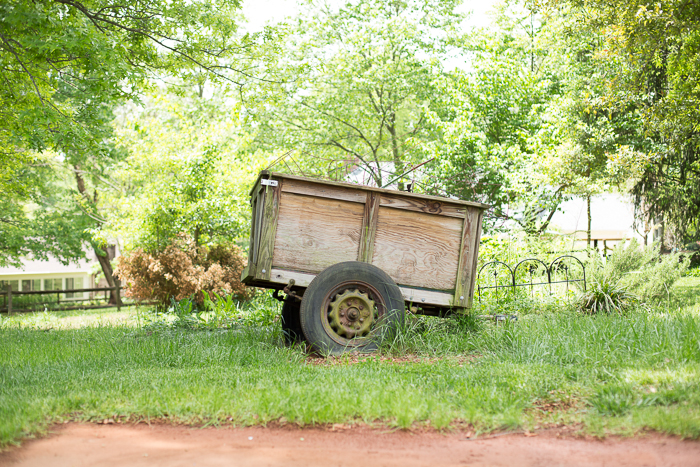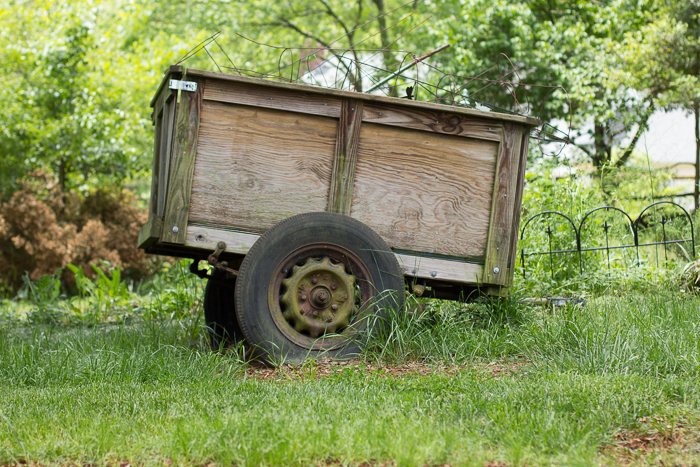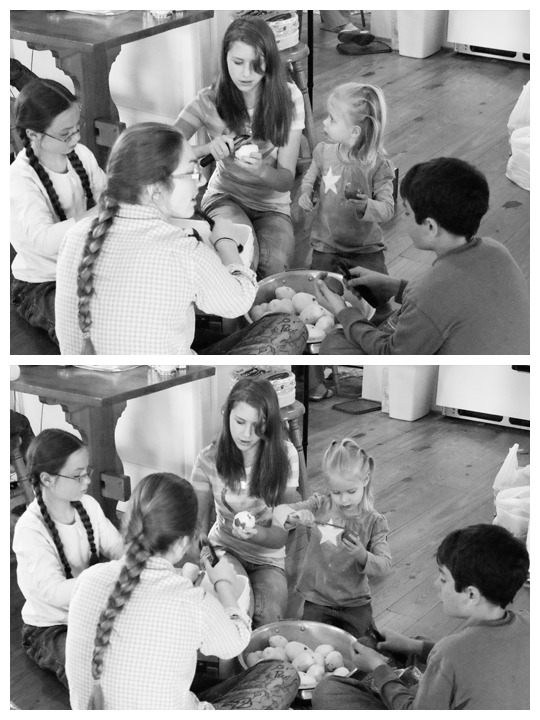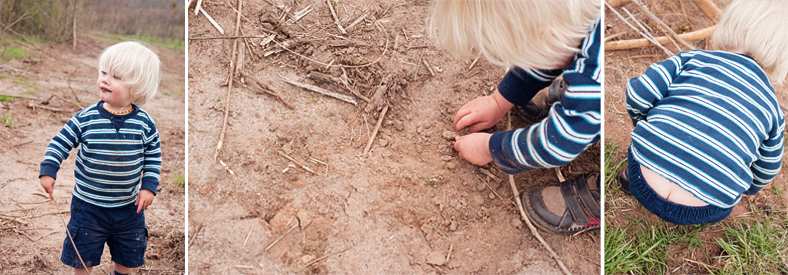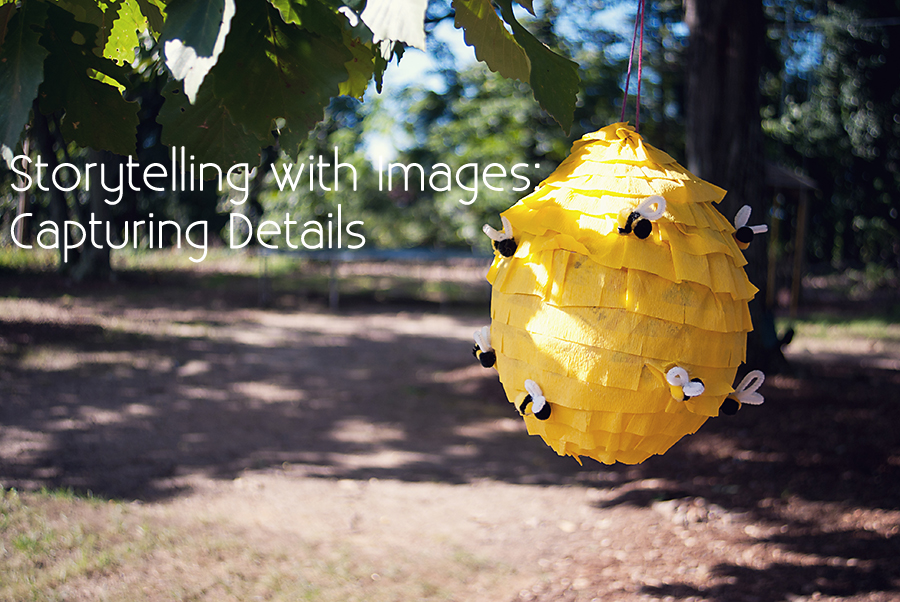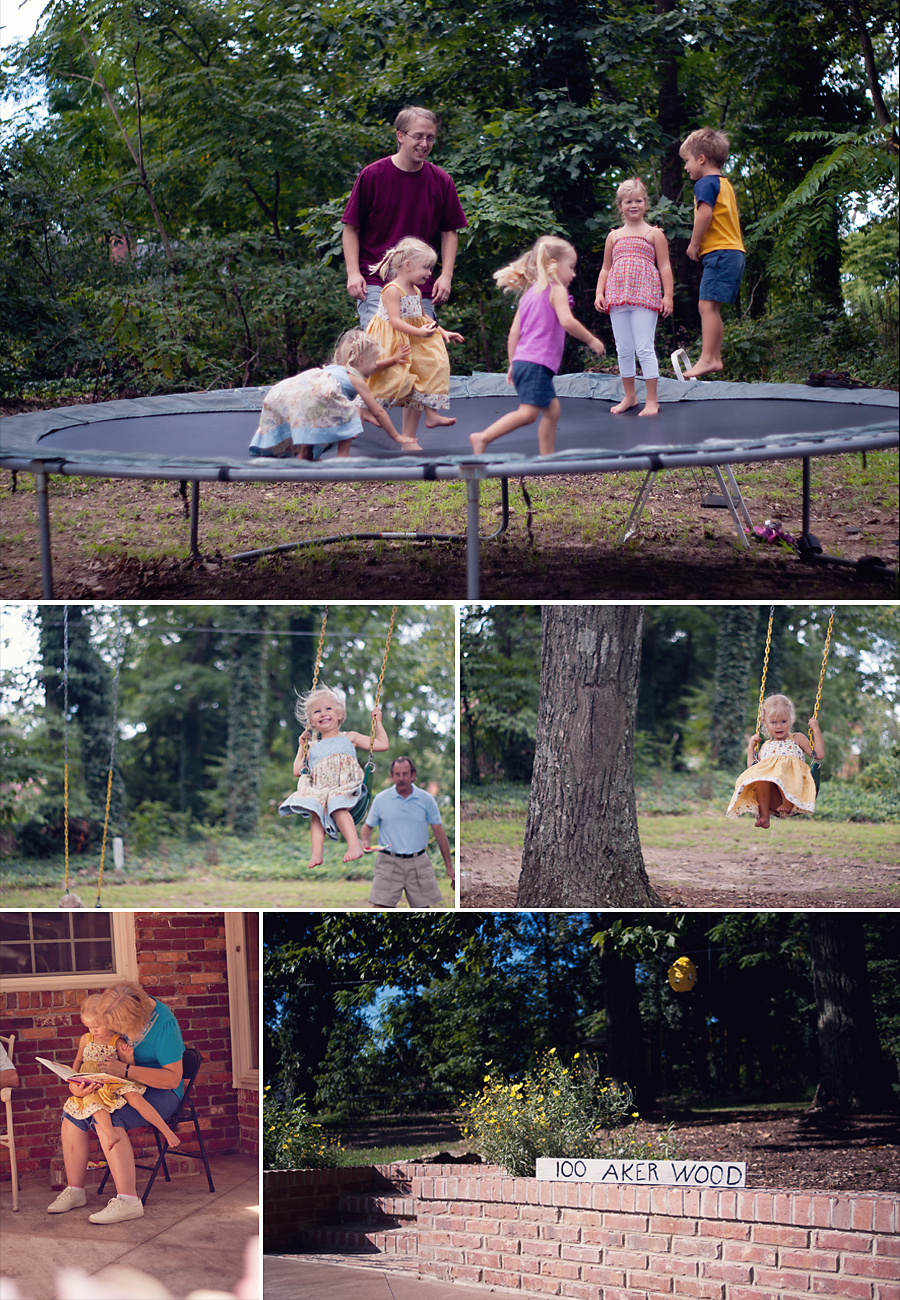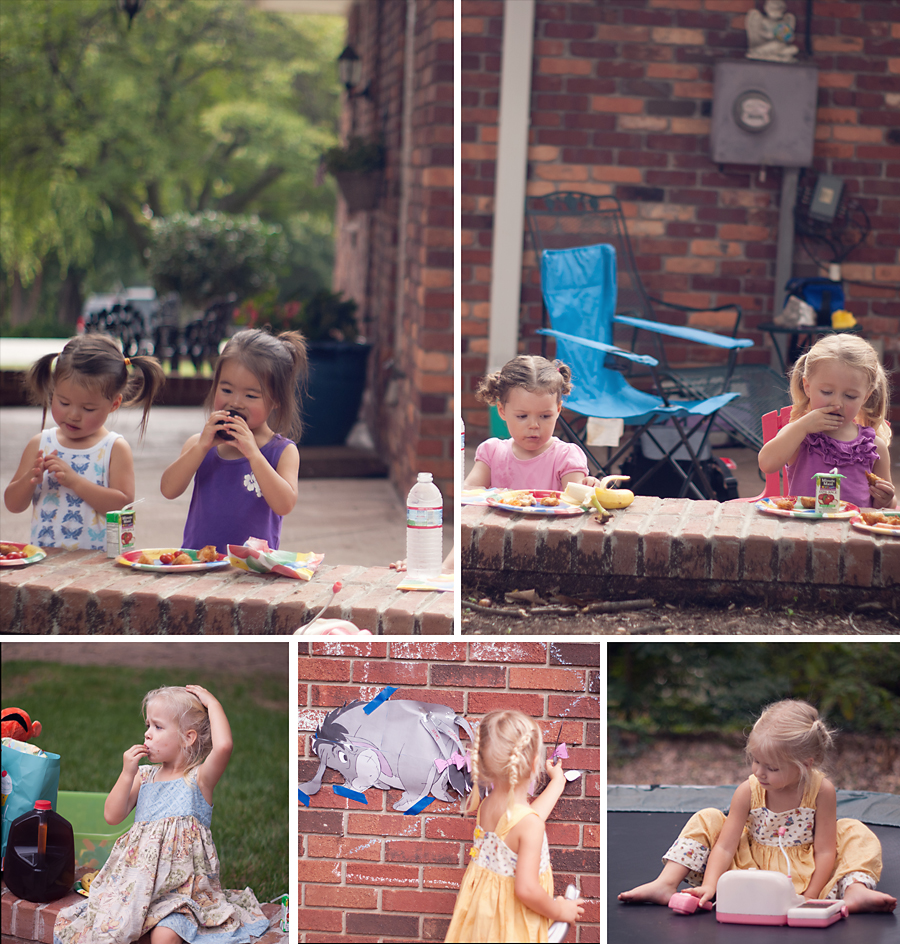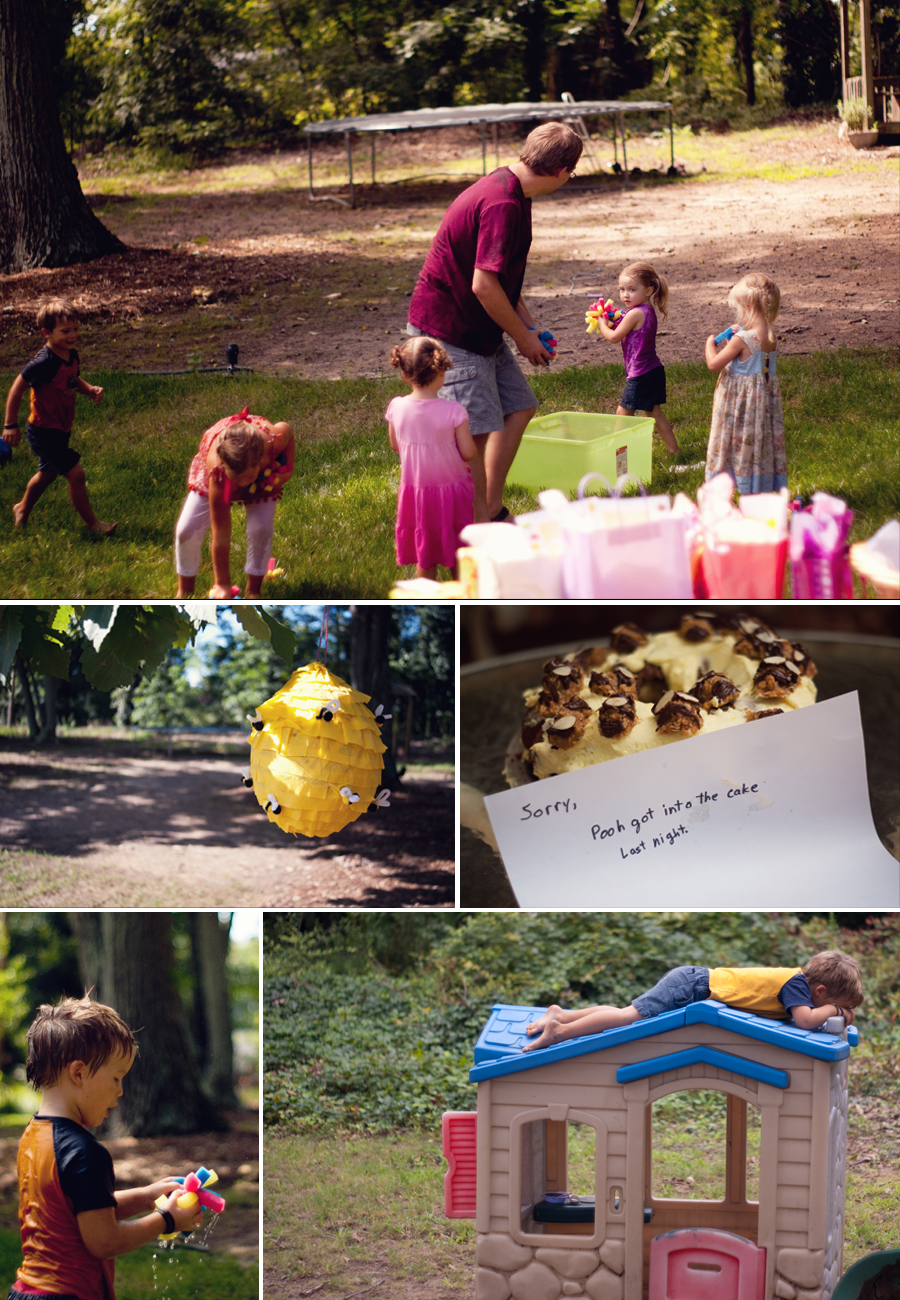21
2013Focal Length
Last week I threw around the term focal length a lot without defining it. The technical definition of focal length is beyond the comprehension of anyone whose not really engineer minded. If you’re really interested, here’s a wikipedia article. For our purposes, what we need to know is that focal length determines the angle of view; the longer the focal length, the smaller the angle of view and the more we have a sense of being “zoomed in” to the subject.
The focal length of lenses fall on a spectrum from super wide angle to telephoto. Wide angle lenses capture more of a scene while telephoto lenses zoom in to the capture only part of a scene. The spectrum runs from around 8mm (wide angle) to 5000mm+ (telephoto).
Here is a nearly full range of focal lengths used to take the same shot from the same location. This will give you a feel for how focal lengths affect the resulting image. All of these images are shot with a crop sensor so an 18mm lens is creating an image that would be more like what 24mm lens would on a full frame camera.
In the rest of this post we’re going to get into the nitty gritty of lens focal lengths, the distortion different focal lengths create, and when to use each focal length. We’ll start at the wide end of the spectrum and work our way to the telephoto end. I’ll also mention a few specialty lenses that can be creatively fun!
This following is a reference article, so feel free to skim over just the lens focal lengths that catch your eyes or that you already own.
Read More»14
2013This is a quick aside lesson that I didn’t plan for! As I started the focal length post on camera’s I realized that describing focal lengths is difficult because they’re affected by the size of your sensor. I’m used to describing things as if I were shooting full frame 35mm film so in next weeks post on focal lengths, I will be describing lenses that way.
The problem is all of us actively participating in this class (except for Amanda-lucky duck!) shoot on a crop sensor. So I’ll also include a sentence or two in parenthesis describing the difference on a crop sensor for those focal lengths most affected by a crop sensor in the following post. But for now, let me tell you the difference between crop and full frame sensors.
What is a Full Frame Sensor?
A full frame sensor is the same size as a 35mm piece of film.
If you’re a beginning photographer taking or observing this class, you most likely do not have a full frame camera. Full frame camera bodies (without a lens) cost upwards of $2300 (you might find a used one hovering around $1800). I do not own a full frame camera nor will I own one when my camera body upgrade arrives.
What is a Crop Sensor?
If a full frame sensor is the same size as a 35mm piece of film, then it follows that a crop sensor is ‘cropped’ or smaller than a 35mm piece of film.
At first this doesn’t seem like a big deal. Sure it’s a smaller sensor, so obviously the picture quality is not as great, but that doesn’t seem like a huge trade-off in regard to camera price.
The big deal is because lenses are built for a 35mm sensor/film the focal length plane has changed. So not only is the sensor sized cropped, but the actual image taken is cropped as well. A lot of this depends on a the ratio of the sensor size to a full frame sensor, but I’m not going to get that technical. The following is the short story.
Shooting with a Crop Sensor ‘Zooms’ the lens Focal Length
On average a crop sensor zooms or crops your frame around 15-25mm. This makes your focal length act as if it were 20-30mm longer than what the lens is labeled.
For instance, on a full frame camera a 50mm focal length lens is considered closest to what the human eye sees. 50mm is referred to as a normal lens for this reason. This is an image of taken by a 50mm on a full frame camera.
This is the same image from the same spot taken on a crop sensor also with a 50mm lens. The crop sensor appears to make the lens zoom in when in reality it’s just the smaller sensor size creating that affect.
Essentially, on a crop sensor a 50mm lens becomes a 75mm lens. So on a crop sensor, a “normal” lens is actually either a 30mm or a 35mm to account for how the crop sensor zooms in that 15-25mm.
Is that clear?
I know crop versus full frame sensor is an extremely ‘advanced’ concept in the photography world. But I totally felt that if I didn’t explain the difference before the focal length lesson that things would get confusing for all of us.
I may have confused you more… but what you really need to know is that when I describe a lens in the next post that you’ll need to mentally add 15-25mm to that lens to see what the effect will be on your crop sensor. So an ultra wide lens (as you’ll learn next week) will likely only be a wide angle lens on your crop sensor.
I also want you to hear now that some lenses will not work on a full frame sensor. They’re built for a crop sensor and will only work for a crop sensor. So if you have an inkling that one day you might like to work on a full frame sensor, then invest in lenses that work on both crop and full frame sensors.
***Much Thanks to Amanda for taking these quick snaps on her crop and full frame cameras so that you could visualize the difference!. 🙂
07
2013A Little Class Itinerary Note
We’re coming up on a half year of working through this class! I find that hard to believe!
I’m extending your Storytelling with Images “due date” until Friday, May 24th. Again, due dates are relative because this is totally a jump right in wherever you are sort of class. So jump right in. But I’ll be featuring all of my students again on Tuesday May 28th. So if you’d like to be featured then put your assignments into the Quiet Graces Free Beginner’s Photography Class Flickr Group on or before Friday, May 24th 🙂
There will be no assignments for the next three weeks to give you time to finish this super intense Storytelling with Images series. If you’ve finished all the assignments, go back and revisit the assignment that challenged you the most. I always enjoy redoing some of these key assignments.
For the next three weeks, we’ll have three short posts on Camera Lenses. All will be simply informative to give you time to finish up and to give me time to dive into writing June’s series on shooting in Manual Mode and another super secret writing project that has nothing to do with photography but will likely be announced the last week in May as well.
A few questions for you to answer in the comments as I plan/write manual mode lessons: How is program mode working for you? What has been hard about it for you? Have you got a good handle on using program mode and thinking about exposure compensation? Do you have any program mode questions before we dive into manual mode?
Any questions other questions, class? If so, jump into the comments. If not, let start getting a little information on lenses.
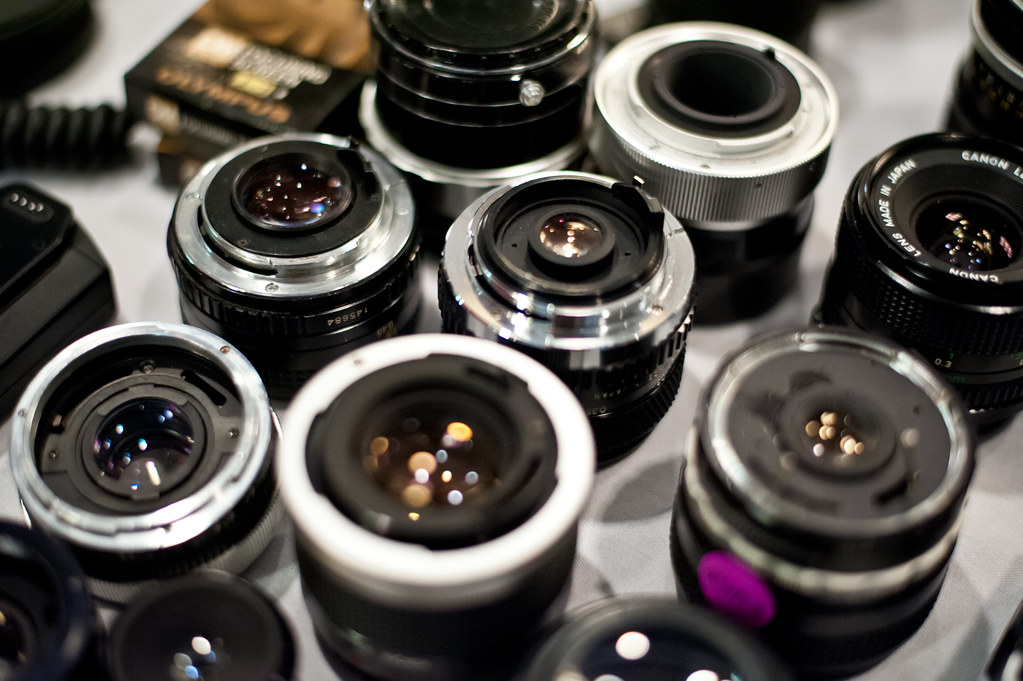
Image Courtesy KayOne73 on Flickr
What Are the Main Lens Types?
There are two different types of lenses on the market today: zoom lenses and fixed focal length (or prime) lenses. Most of us are familiar with zoom lenses since this is what usually comes installed within Point and Shoot Cameras or as part of a beginner DSLR kit. Yet, most beginner photographers are unaware of prime fixed focal length lenses. In this post I’ll define and do a pro/con comparison of zoom and prime lenses. I want you to know offhand that I am most definitely a prime lens girl, I’ll try to be unbiased in the pros and cons 🙂 Know that almost every photographer prefers one over the other and that it’s totally okay to do so!
Zoom Lenses
A zoom lens is probably the lens most find familiar. Almost all DSLR camera kits come with a zoom lens and most Point and Shoots are also equipped with zoom lenses. The photographer manually manipulates the lens to decide how much of the scene they will capture. On a DSLR you change the focal length by twisting the lens in and out. On a Point and Shoot, you usually have a button control that zooms in our out. We’ll define focal length a bit more in our next lesson, but for now know that the zoom lens has a variable focal length which changes the amount of the scene we can capture.
Pros of a Zoom Lens
- Able to capture a scene in multiple ways as you ‘zoom in’ closer to the action
- Can be used for work that requires multiple focal lengths without changing your lens. For instance, you can photograph both the just the bride and groom kissing as well as the entire wedding party without switching lenses.
- You don’t have to switch lenses for different situations. For instance, if your living room is small my 50mm might put me too close to your kids to capture both of them playing at the same time. Because I use prime/fixed focal lenses, I will have to switch lenses to capture both kids playing. While you, using a zoom lens, will just zoom out.
- Less gear to carry around your bag. A 18-55 or 70mm and a 70-200mm zoom will cover most any situation the average photographer comes. While in prime lenses I would need an 18mm, 35mm, 50mm, 85mm, 100mm, and 200mm lens to cover the same range!
- Carrying less gear means even if you buy quality fast f/2.8 zooms you might spend less than a prime lover whose goal is to cover the same range of focal lengths.
- In general, a zoom lens is typically cheaper than prime lenses unless you’re buying a quality fast f/2.8 zoom lens.
Cons of a Zoom Lens
- Heavy. I know a few wedding photographer friends who have developed carpal tunnel syndrome from carting around 70-200mm lenses.
- Things are not as sharply focused as a prime lens. Because they are more complicated to manufacture, zoom lenses often have a range that is most sharp. For instance on an 18-55mm lens, the 30-40mm range will most likely produce the sharpest images.
- Can be very expensive if you want a ‘fast’ lens with an aperture of f/2.8
- If they don’t have a higher aperture of f/2.8, you may find yourself needing to use flash in a darker building to both freeze the action or capture the scene.
- Tempt a photographer to stay in one place rather than move around to frame a shot because the photographer thinks “they can just zoom in.” This can stifle creativity if the photographer isn’t careful.
Fixed Focal Length Lenses (or Prime Lenses)
Prime lenses do not zoom. Using a prime lens is sort of like looking through a magnifying glass: to see the object closer you move the glass closer. With prime lenses you will “zoom with your feet.” At first, moving around to zoom is an unusual or inconvenient situation, but it also helps me to focus on getting the best composition. Some people love primes and some people hate them. It all depends on what and how you like to shoot.
Pros of Prime Lenses
- Lightweight. An 85mm prime lens is way lighter than the 70-200mm zoom that covers the 85mm range.
- Typically produce sharper images than their zoom counter parts.
- Primes are generally better for low light because their widest apertures are wider than zoom counterparts. You can purchase primes with apertures of f/1.2 and it’s hard to find a zoom with an aperture greater than f/2.8
- You can select a focal length specific to the subjects you enjoy most. If you want to photograph scenic vistas, you’ll be snatching up a prime in the 14-28mm range. If you photograph people, you’ll pick between a 50mm or 85mm lens. If you love macros, you’d grab a prime 60, 90, or 100mm macro. Specialty is a strong point with primes.
- You are forced to “zoom with your feet” with a prime lens. This can promote more creativity in image composition because you are unable to stay in one place and zoom in.
Cons of Prime Lenses
- Can be expensive. A prime lens with an aperture of f/2.8 or wider generally costs more than a ‘slower’ zoom lens.
- To cover the whole range that a zoom lens covers you’ll likely have to spend as much if not more than the cost of buying one quality fast f/2.8 zoom. Buying an 18mm, 35mm, and 50mm zoom lens with fast apertures will be way more expensive than a single 18-55mm f/2.8 zoom.
- Super fast primes of f/1.4 and f/1.2 are incredibly expensive.
- You’ll need to purchase and carry more prime lenses if you shoot a huge variety of subjects (macro insect shots, panoramic zoom scenes, and portraits for instance).
- You can’t zoom in without moving your body. This takes some getting used to… but it’s also a huge pro (see above).
How Do these Lens Types Apply to Point and Shoot Users?
If you’re using a point and shoot camera you could have either a Prime Lens or a Zoom lens just like the rest of us. But Point and Shoots get a little confusing because they may also have “Optical Zoom”.
Here’s the short story.
- Your camera has a prime lens if you don’t see the lens on the outside of your camera moving in and out as you zoom.
- Your camera has a zoom lens if you do see it moving in and out as you zoom in.
- If your camera has Optical Zoom that does not mean it has a zoom lens. It means your camera has the ability to crop your image before you release the shutter.
- My phone camera is a fixed focal length lens with optical zoom. My first digital point and shoot had a zoom lens that when you zoomed all the way in also had a “6x Optical zoom” feature that cropped the image in camera even more.
- When you enter the optical zoom zone of your camera, remember that your image quality is going down just as if you cropped the image afterward in photo editing software. So if possible, get closer to your subject rather than use optical zoom.
30
2013We’ve played around with the rule of thirds, leading lines, different angles, and shooting details, now lets bring it all together into a diptych and a triptych.
What is a Diptych and Triptych
A diptych is a pair of images and a triptych is a trio of images placed together to tell a story or make a comparison.
That’s a deceptively simple definition for a fun technique that when used properly can make twice (or three times) the storytelling impact of a single image. Choosing the two or three photographs to send the message you want the viewer to see is heart of creating diptychs and triptychs. The images can be of the same scene processed differently or at different moments in time (like a series of a diver entering the water or a child playing with a toy). Or the images can be of completely different scenes that combine to tell a story or communicate a message.
Examples and Analysis of Diptych and Triptych
I have fond memories of creating Diptych and Triptych for my photography 2 class in college. I tried to dig those out and had my husband scan the one I could find as well as created a few more.
I’m going to critique each set of images here by asking the following questions. This is also a good model for critiquing the resulting diptych/triptych in our Flickr Group.
- Are the images making a comparison, telling a story, or making a statement, or something else entirely?
- Verbalize the comparison/story/or statement this set of images makes.
- What could make this set of images stronger?
- What is really effective about this set of images?
Mountaintop Experiences
- Are the images making a comparison, telling a story, or making a statement, or something else entirely? I think this one from my film days (it’s not the greatest scan… but it’ll do) is just setting a scene.
- Verbalize the comparison/story/or statement this set of images makes. I think if I just saw the middle picture or even the two pictures on the right, you’d think she was just reading a book and eating a bag of chips with a pretty view. It’s the third photo with the rope and the pack that really sets the scene of a break from climbing.
- What could make this set of images stronger? I wish I’d had a wider angle lens to take this shot. But I’m pretty sure that there was no more than 10ft across the top of that precipice. It also would have been nicer had they lined up more directly, but again.. not a lot of room to maneuver (and there were at least 5 others up there with us). I think I stood in the same place for all three images.
- What is really effective about this set of images? I think it’s just an expanded view of a small event. I like how it just enlarges what your intial thought is looking at the images.
Pealing Potatoes
- Are the images making a comparison, telling a story, or making a statement, or something else entirely?
Making a statement. - Verbalize the comparison/story/or statement this set of images makes. When I took saw these two together, I was struck so much by how important it is for my little girls to have strong role models. The girls are watching everyone and modeling their actions even on the most mundane things. I put these two images together to help me visualize the importance of older girls/women in young girl’s lives.
- What could make this set of images stronger? I shot with a pretty wide depth of field (f/8) I wish I would have opened up a bit more (maybe f/3) to cut down the distraction of the backdrop. I also wish I would have been a bit closer to the subjects.
- What is really effective about this set of images? The confused look toward her role model followed by the determination to peal that potato. It’s her face that makes this strong. I also think the black and white processing helped to focus us on her face.
Boyhood
- Are the images making a comparison, telling a story, or making a statement, or something else entirely? I think they’re most effectively telling a story.
- Verbalize the comparison/story/or statement this set of images makes. One word. Boyhood. My girls are pretty tom-boyish, but they’re timid at first. Not Sedryn. Dirt, check. Stick, check. Pants falling off, who cares?
- What could make this set of images stronger? I’m not sure I like the way I have them arranged on this storyboard. I sort of want the two detail shot on the ends and the boy with his self satisfied dirty face in the middle. I also wish I’d taken them a bit later during his play when he was much messier.
- What is really effective about this set of images? It’s emotional for me. This boy setting out to conquer the world and starting out with the nearest patch of dirt. But it’s also so mundane. This is just what little boys do.
I had a good making a statement triptych that I couldn’t find to scan. An image of a pristine waterfall, a backhoe in a cleared field with a beautiful mountain view in the background, and a broken stop sign in a pick of trash. The statement was the need to keep some areas of the world pristine I wish you could see it… but I just wanted to give you an idea of how you can make a specific statement like that with your images in a triptych series.
Diptych and Triptych Assignment
Get out there and create 1 diptych and 1 triptych. Bonus points if you feel inspired to do more than one. In the resources section below, you’ll find some inspiration images as well as tutorials/helps for putting your three images in one frame. If you want to put them all in one frame, go for it. If that seems way too much work for you at this time, then just title all your images something like Diptych 1 and Diptych 2 so we know which goes with which.
When you post your images over in the Flickr Group, leave no description beyond maybe a title, and see what others take from your work in their critique comments. You could put the questions in the description if you wanted. After a few comments, feel free to add your own purpose/self-critique.
Comment on 2-5 (or more) of your fellow classmates Diptych/Triptych and answer the following questions in your critique:
- Are the images making a comparison, telling a story, or making a statement, or something else entirely?
- Verbalize the comparison/story/or statement this set of images makes.
- What could make this set of images stronger?
- What is really effective about this set of images?
Resources
Let me share a few extra resources as you create your diptych or triptych.
Inspirational Diptych or Triptych
Get your creative juices flowing by clicking any of the following links for inspiration.
Diptych Photography: The Art of Combining Two Images
Diptych & Triptych: 5 Prime Examples
Collections of Triptych Photography by Adde Adesokan
Triptych: When a Single Picture Won’t Do
How to Make a Diptych or Triptych in a Single Frame
You can use photo editing software to make a Diptych or Triptych in a Single Frame. Here are a few actions/tutorials for making collages in Photoshop Elements/Photoshop or Lightroom as well as a free software program that you could use to make your diptych and triptych.
Creating a Triptych in Lightroom (same technique would work for a diptych. I don’t have Lightroom… so you’re on your own for this one!)
A free PSE/PS action for a Diptych (One horizontal and one vertical image)
A free PSE/PS action for a Diptych (Two vertical images)
A Set of Free Actions including two Diptych (Two horizontal/two vertical… I use this whole set all the time!)
A free PSE/PS action for a Triptych (3 vertical images)
CollageIt (Free Program for creating collages on Windows or Mac. I have no experience with this… just thought it might be helpful if we didn’t have photo editing software.)
Please let us know in the comments if you know of another way to make simple collages for this assignment! Use links if you can.
I can’t wait to see what stories you tell with these!
23
2013My sociology teacher in high school asked us to draw a flower on a note card on our first day of class. We passed them up anonymously and she held each one in front of the class and talked a little about each person.
I drew an orchid. I’m not great at drawing, but you could tell that I was trying to capture a specific flower.
She labeled me “meticulous.” I had figure out how to spell it and then find a dictionary.
meticulous (adj): marked by extreme or excessive care in the consideration or treatment of details.
She had nailed me.
At that time I was a raging perfectionist who spent hours on school projects or journaling over conversations with friends. Over a decade later I’m a reformed perfectionist who is able to differentiate between superfluous details and those that really matter. I also remembers details about people in a way that consistently surprises them and am writing a 52 week beginner photography class because I can’t contain all the details I’m passionate about into just 6 weeks :-p
Did I mention she nailed me?
Unlike the rule of thirds or leading lines or changing my perspective, capturing detail images comes very naturally to me. I’m thinking that may not be true for all of you.
So let me tell you a little about the whys and my process for capturing detail.
Detail Images are the Vector for Memories
Let’s stop a moment and think back to your wedding day. Or the day you met your girlfriend. Or the day you birthed your baby. Or even that first day on your current job. Or that sad day when you buried a parent or child or friend. Or that lazy summer afternoon that you spent with your sister at 9.
What do you remember most?
When I was 9 and my sister was 8, we had a fort in our shed where the neighbor boy wasn’t allowed. I don’t remember much about that fort besides a pile of barbies. Except for one day when my sister came tearing out of the shed screaming that she had seen a “rat thing.” She described it as a rat with a red mohawk. My sister was never scared of anything so that was the end of our fort. We never played in the shed again.
Do you see what I remember? A pile of barbies. One day. My sister’s description of “rat thing.” All of those things are details. There is not one movie type reel captured in my brain.
When my sister and I talk to my parents about our childhood memories there is nearly no overlap in memories. If we talk about our day at the state fair we all note something different. My dad will ask if we remember how he won us the big-stuffed-whatever-it-was. Mom will ask about if we remember how we had powdered funnel cake sugar all over our hair. My sister will remember how she beat dad on the go-cart track. And I will remember racing down the monster slide with dad and sister on slick flour sacks over and over.
The four of us experienced the same event in time but we all remember it differently. We all have focused in on a different detail.
Memory craves details. It thrives off details. We can’t possibly remember everything about each day because our brains aren’t wired that way. Instead, we put entire days or experiences or traumas into files based off just the smallest detail memories. And each remembered day has a thumbnail image that triggers the rest of the details of that day.
Our memories are wrapped up in the details, even if our future planning is wrapped up in the big picture.
Detail Images both Define and Complete the Story
I could spend a lot of words on explaining why the above statement is true, but as I just spent an equal amount of words convincing you that memory hinges on details, I won’t. I’ll tell my meticulous perfectionist self that a lot of words aren’t what you need to prove that detail images both define and complete the story. Nope, you need a series of images.
Take a glace at the following series of images that I took at my daughters’ birthday party, then answer the questions following the images in the comments section.
Your first assignment: answer the following questions in the comments section.
- What was the theme of this birthday party? How did you know?
- What activities occurred? Which activities were you cued into by a detail shot? Which activity by a more big picture image?
- Without looking back up at the images, which image was your favorite? Was it a detail or global image? What does that say about you?
Detail Images Assignment
We’re sticking with the deceptively simple assignments throughout this Storytelling with Images Series.
Take your camera out and capture a few (2-4) detail images that tell the whole story in the same way that your memory does. Vague… maybe? But roll with it, because I can’t wait to see how you interpret this assignment over in our Free Beginner’s Photography Class Flickr Group!
